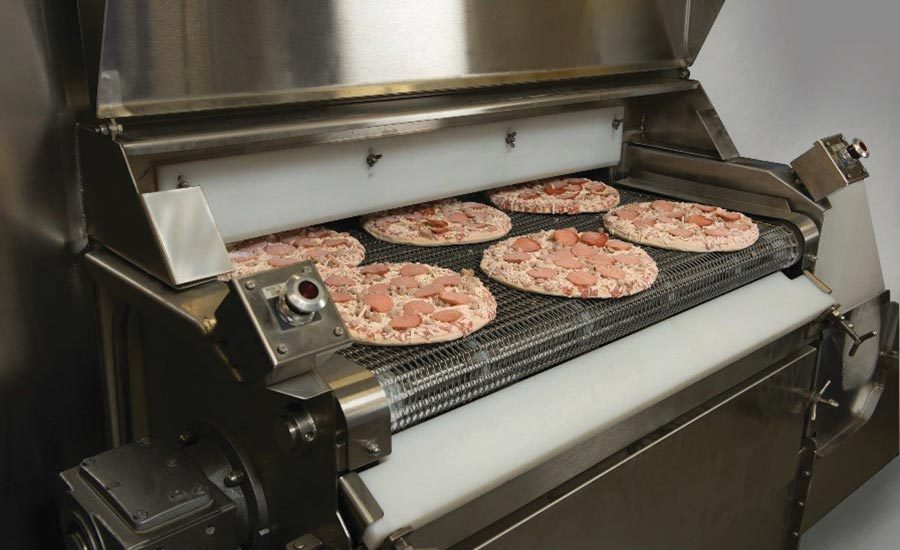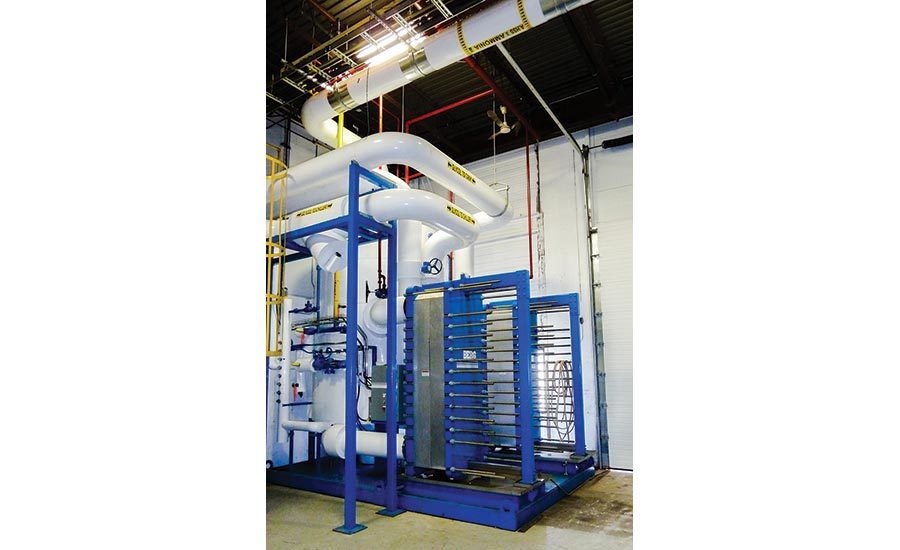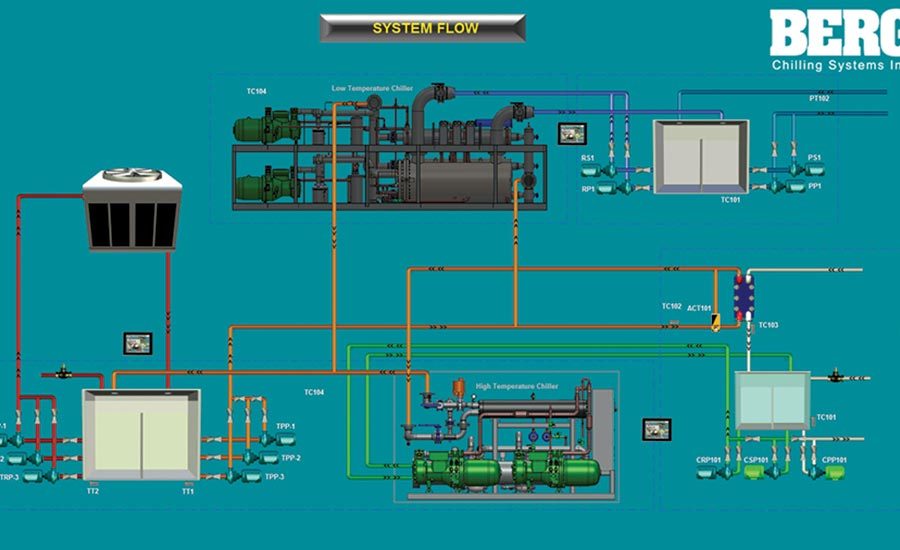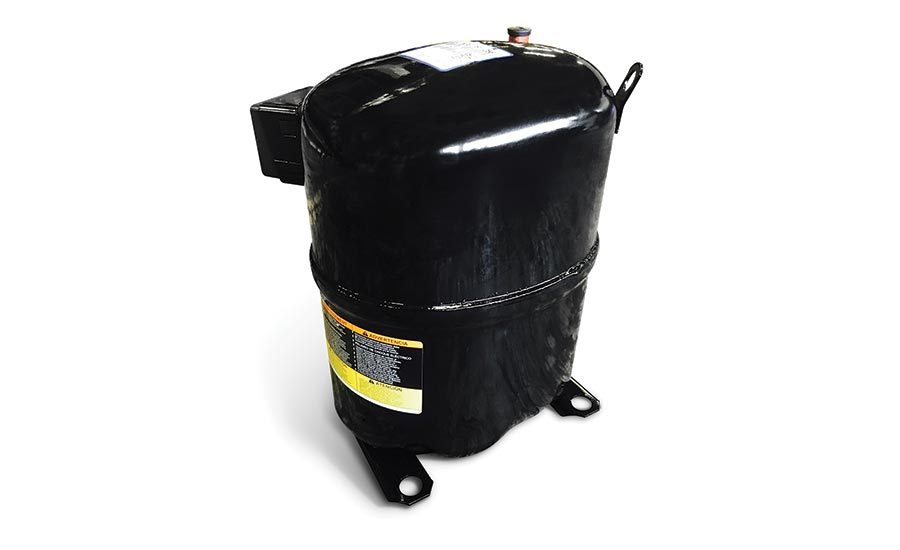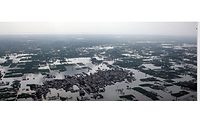As you can guess from the name, US Cold Storage has pretty strict requirements for its freezing and cooling equipment.
While performance is the number one consideration, energy efficiency ranks highly as well. In addition to the economic advantages, sustainability and a lessened environmental impact are becoming cornerstones of most companies’ attitudes toward equipment selection, operations and strategic planning.
Keeping all of those things in mind helps shape how US Cold Storage approaches its equipment and operations, says Dave Annett, Western regional engineer. The company has a standard rate of return for all energy projects, so that’s the minimum goal Annett sets.
“We’re going to look for the most energy-efficient way to do it that we can,” says Annett.
The efficient ways still have to offer the needed performance, of course. It does you no good to save thousands of dollars on your power bill if you lose hundreds of thousands or millions in food that isn’t properly cooled. On the other hand, buying the most powerful equipment available will likely offer you the needed performance, but could end up being a waste of money, as it uses more energy to freeze and cool products that could be handled by a smaller, more efficient system.
By developing an overall strategy for equipment and operations, processors can balance performance and efficiency in a way that meets both goals. To do so, determine what you need from an equipment standpoint—but don’t overlook the importance of proper operation.
What you need
For most processors, this is a pretty straightforward determination. If you know you need to store frozen food, well, then, the equipment has to be able to bring the temperature below freezing. But details about exactly what temperature the product needs to be at, as well as the characteristics of the product—weight, size, packed or unpacked, among other things—can help inform the decision of what equipment you need and how it needs to be operated.
“First off, what are they trying to cool or freeze?” says Steve Broerman, engineering manager for Vortec. “What kind of temperatures are required?”
By laying out exactly what will be produced in a facility, you can determine what your needs are and how to best meet those needs. As an example, if your facility is producing or storing ice cream, you need to be able to go to -20°F, but if not, you might be able to operate under the guideline of being able to get to -10°F.
When you’ve determined your operating parameters, then you can decide on the type of system and the specific equipment that will best help you meet your needs.
“You need a certain amount of equipment to keep it cold, right?” says Annett. “So, no matter what—ammonia or CO2—you’re going to have to decide how much you need,” regardless of the type of system you select.
Once those questions are answered, then a cooling load calculation can be performed to find out how much cooling capacity is needed. This can vary based on exactly what is being cooled—or frozen—in different plants or even different parts of the same plant, so be specific as to what will be going where. Undercooling can lead to waste if food has to be thrown away, but overcooling will hurt efficiency efforts.
“The colder you have to bring them [products] down, the less energy efficient it is,” says Ole Christensen, vice president of engineering for M&M Refrigeration. “We see a lot of times companies freezing their products lower than they’re going to store them, so that’s a waste of efficiency.”
As Christensen points out, if you’re going to be storing something at -10°, freezing it down to -20° isn’t really necessary and will probably just end up using excess energy.
Selecting the right system and the right components for that system can be a daunting task. With so many different options for freezing and cooling and so many moving parts, so to speak, it can be easy to select a system that may end up being overkill or may end up not offering the exact performance you need.
This is where being specific in what you need to freeze and cool helps shape your strategy. But in addition to the products themselves, keep in mind that your strategy will need to be tweaked if you’re managing multiple locations, says Mark DiMaggio, director of food and beverages at Linde North America.
“Each individual scenario is different,” DiMaggio says. “No two plants’ power requirements are the same: the capital structure is different; the installation costs are different.”
One way around this is to involve OEM engineers early on in the planning process. By having plant engineers explain to OEM engineers exactly what the specifications need to be for the system, the OEM engineers can then help design a system to help you meet your goals. They can also draw on past experiences to point out areas that have been overlooked or created issues in other installations and help avoid them in your plant.
As an example, one area to keep an eye on during the planning and design process is the air supply, says Vortec’s Broerman. Compressed air filtration helps remove particulates and oil from the air, which most processors would already be aware of. But Broerman points out that the humidity level of the air is an area where his company often makes recommendations during the design and planning process.
“If their air supply is not dry to a certain level, we would possibly recommend some type of air dryer to get the dew point temperature of the compressed air below the temperature of the cold air that’s going to be exiting from our Vortex tube,” Broerman says.
Total cost
An important consideration during the system design and equipment selection process is the total cost of ownership. The upfront cost is an important consideration, but a cheaper compressor may end up costing more in the long run because it uses more power or needs more maintenance.
Additionally, Department of Energy and EPA regulations are phasing out the use of certain refrigerants. Those phased-out refrigerants are being replaced with natural refrigerant systems, which will often be more expensive upfront.
However, the efficiency of the newer systems can mitigate those upfront costs by offering greater savings down the line. Processors can also consider how much flexibility they have in the production process to help strike a balance between cost and performance.
“Sometimes when the end user sees the initial capital and energy consumption required, then they decide that freezing the product in eight hours instead of four is acceptable if that means that the equipment gets smaller,” says Evis Buli, sales engineer for Berg Chilling Systems.
One newer system that offers potential efficiency advantages is an ammonia-CO2 cascade system, which is the type of system that Annett specifies for all new construction. The cascade systems are replacing the traditional two-stage ammonia systems because they offer not only efficiency, but less need for ammonia.
“A 20,000-pound ammonia system can be cut down to 2,000 in a cascade system,” says M&M’s Christensen.
Freezing and cooling systems are most efficient at full load, but it’s relatively rare for those systems to be running at full load. One of the advantages of cascade systems is that they are more efficient at partial load than other systems, meaning that they’ll be operating more efficiently under the most likely operating conditions.
In addition, cascade systems restrict the ammonia charge to the machine room, and only CO2 is present in other areas. This reduces the amount of ammonia charge needed and also means there is less of an area in the plant where ammonia—which is both flammable and toxic—is present.
“We feel that is the biggest and best bang for our buck,” says Annett. “Any new project is a cascade system. We haven’t converted any [existing systems] yet, but down the road, it will pencil out to convert.”
Other options include cryogenic or cryomechanical systems. In cryogenic systems, nitrogen or carbon dioxide is used to rapidly freeze the outer layers of products beyond their actual freezing point, while the inside stays warm until equilibration occurs.
In cryomechanical systems, a cryogenic and a mechanical freezer work together to freeze the product. The cryogenic freezer rapidly crust-freezes the product, then the mechanical freezer does the rest. Combining the two systems can be more efficient than an either/or setup.
One benefit of cryomechanical systems is they can help ensure you’re getting a consistent level of production. With a mechanical freezer, you may start the day processing 20,000 pounds an hour, but not be able to maintain that production throughout a shift, says Linde’s DiMaggio. If that’s the case, then you may have to make a choice about how to maintain production.
“Number one, you need to shut it down for a couple [or] three hours and defrost it if it doesn’t have the new type of coils, and many types of this equipment don’t, and clean it out,” says DiMaggio. “Two, you reduce the production rate, so that you can obtain that desired equilibrated output temperature. Or three, you maintain that production rate, come out with a warmer temperature, and then you’re doing something with that back-end product that has not yet been finished—whether putting it in a holding freezer for an extended state of time or putting it back through a different type of freezer to finish the freeze.”
Regardless of the specific system chosen, there are considerations beyond just equipment to keep in mind when taking a holistic view of the cooling and freezing process in your plant. How will you supply the equipment with ammonia, CO2 or cryogenic gases? If you’re installing a new ammonia system in an existing facility, is the machine room up to code for handling ammonia? How will the food products be fed into and taken out of the freezer or cooler?
“At the end of the day, every product has specifications,” says DiMaggio. “The conveyance could contribute [to] or detract from a quality configuration perspective, from a yield perspective, from a temperature profile perspective.”
When all of the different questions are taken into consideration, you can then define the total cost of ownership and use it to help with your decision of what kind of system to use, what capacity you need and how it needs to be managed. This calculation also applies to replacing equipment or even an entire system, says Buli.
“If the equipment in question is a part of a larger system that works together,” says Buli, “then it’s worth asking the questions: Is this piece worth replacing? When will the other components need replacing? If most of them will need replacing in the next couple of years, is it worth looking at the whole system? Is there another system that is more efficient, reliable, more serviceable, more economical?”
The importance of operations
Buying energy-efficient equipment and components is the first step to achieving energy efficiency in your freezing and cooling operations, but it’s certainly not the last. Operating the system in its intended manner plays a large part in whether you’ll get the performance you paid for.
The good news is that it’s easier than ever to ensure your systems are being operated the way they should be. Controls and monitoring options offer a much greater level of oversight of not only how your systems are being operated, but in helping to catch something before it goes wrong.
Newer systems offer much more in the way of performance monitoring and diagnostics than older systems, says Ani Jayanth, product manager for Emerson.
“If you think about a 1969 Camaro, all you had was an oil gauge and an engine temperature gauge,” says Jayanth. “Typically, when there was a problem, it was too late. Your temperature is rising for your engine block, but you have no idea what is causing that. Is it an oil leak, is it because your pistons are shot, what’s going on there that’s raising that heat?”
Much like building controls that can alert the facilities department to a potential problem with a piece of HVAC equipment, control systems for freezing and cooling equipment can monitor themselves, catch potential issues early and avoid expensive, production-halting emergencies.
These control and diagnostic systems allow all the pieces of a cooling system to talk to each other as well as the building management system, offering processors the ability to understand and manage how all the different systems work together and what needs to be done to keep them running smoothly. They also offer the ability for operators and maintenance personnel to receive alerts via emails or text messages and can be accessed remotely from a PC in the facility or even outside. So, if an engineer receives an alert at 10 p.m. on a Saturday, he or she can check the problem from home, a smartphone or a tablet before having to decide whether to go to the plant.
In the best case, the systems can even head off problems before they become too big. As Jayanth says, it’s more like a car that alerts you when preventive maintenance is due or something is wrong, usually before it becomes a big problem.
“We have electronic diagnostic systems that will predict and inform you of exactly what is going on. You can take preventative methods to ensure that you don’t have to wait until that engine explodes, creating massive bills for you on the service side of it,” says Jayanth. “If you have some kind of electronic monitor in that system for that entire refrigeration circuit, you now have ways to call in a service contractor ahead of the catastrophic consequence in order to save your food and ultimately the dollar value that’s being housed in your fridge or freezer.”
One other key element to efficient operation is ensuring that your equipment offers flexibility. As previously mentioned, these systems almost never need to run at full load, so being able to run equipment at less than full bore can lead to big energy savings.
Variable frequency drives play a large part in this. By installing VFDs on compressors, you can run two or three at a lower rpm instead of one at a higher rpm. This leads to energy savings, as well as putting less strain on systems by avoiding running them at a higher load when it’s not necessary. But when you do need a higher load, VFDs can allow you to ramp up currently running equipment more efficiently—and less expensively—than starting another piece of equipment.
Of course, you will still probably need more equipment than what you actually run because your planning should be based on being able to meet unexpected spikes in demand or having redundancy in case a piece of equipment goes down, says Annett.
“We basically run between 25 and 50 percent of equipment we install,” he says. “But we still purchase based on worst-case scenario.”
For more information:
Steve Broerman, Vortec, 513-686-8230,
sales@vortec.com, www.vortec.com
Mark DiMaggio, Linde LLC, 908-464-8100,
food-team@linde-gas.com, www.linde-gas.com
Evis Buli, Berg Chilling Systems Inc., 416-755-2221,
bergsales@berg-group.com, www.berg-group.com
Ani Jayanth, Emerson Climate Technologies, 937-498-3011,
www.emersonclimate.com
Ole Christensen, M&M Refrigeration, 410-754-8005,
olec@mmrefrigeration.com, www.mmrefrigeration.com
